SCI Publications
2001
L. Wang, S.C. Joshi, M.I. Miller, J. Csernansky.
“Statistical Analysis of Hippocampal Asymmetry in Schizophrenia,” In Neuroimage, Vol. 14, No. 3, pp. 531--545. September, 2001.
D. Weinstein, O. Portniaguine, L. Zhukov.
“A Comparison of Dipolar and Focused Inversion for EEG Source Localization,” In Biomed. Technik, Vol. 46 (special issue), pp. 121--123. Sep, 2001.
J.A. Weiss, J.C. Gardiner.
“Computational Modeling of Ligament Mechanics,” In Critical Reviews in Biomedical Engineering, Vol. 29, No. 3, pp. 1--70. 2001.
R. Westermann, C.R. Johnson, T. Ertl.
“Topology Preserving Smoothing of Vector Fields,” In IEEE Trans. Vis & Comp. Graph., Vol. 7, No. 3, pp. 222--229. 2001.
DOI: 10.1109/2945.942690

Keywords: vector field methods, ip image processing signal processing, surface processing, ncrr
R.T. Whitaker.
“Reconstructing Terrain Maps from Dense Range Data,” In IEEE International Conference on Image Processing, pp. 165--168. October, 2001.
R.T. Whitaker, X. Xue.
“Variable-Conductance, Level-Set Curvature for Image Denoising,” In IEEE International Conference on Image Processing, pp. 142--145. October, 2001.
D. Xiu, G.E. Karniadakis.
“A Semi-Lagrangian High-Order Method for Navier-Stokes Equations,” In Journal of Computational Physics, Vol. 172, No. 2, pp. 658--684. 2001.
DOI: 10.1006/jcph.2001.6847
We present a semi-Lagrangian method for advection–diffusion and incompressible Navier–Stokes equations. The focus is on constructing stable schemes of secondorder temporal accuracy, as this is a crucial element for the successful application of semi-Lagrangian methods to turbulence simulations. We implement the method in the context of unstructured spectral/hp element discretization, which allows for efficient search-interpolation procedures as well as for illumination of the nonmonotonic behavior of the temporal (advection) error of the form: (see pdf for formula) We present numerical results that validate this error estimate for the advection–diffusion equation, and we document that such estimate is also valid for the Navier–Stokes equations at moderate or high Reynolds number. Two- and three-dimensional laminar and transitional flow simulations suggest that semi-Lagrangian schemes are more efficient than their Eulerian counterparts for high-order discretizations on nonuniform grids.
P. Yushkevich, S.M. Pizer, S. Joshi, J.S. Marron.
“Intuitive, Localized Analysis of Shape Variability,” In Information Processing in Medical Imaging (IPMI), pp. 402--408. June, 2001.
L. Zhukov, D.M. Weinstein, C.R. Johnson, R.S. Macleod.
“Spatio-temporal Multi-dipole Source Localization Using ICA and Lead-Fields in FEM Head Models,” In Proceedings of the IEEE Engineering in Medicine and Biology Society 23rd Annual International Conference, Istanbul, Turkey Oct, 2001.
2000
O. Alter, P.O. Brown, D. Botstein.
“Singular Value Decomposition for Genome-Wide Expression Data Processing and Modeling,” In Proceedings of the National Academy of Sciences, Vol. 97, No. 18, Proceedings of the National Academy of Sciences, pp. 10101--10106. August, 2000.
DOI: 10.1073/pnas.97.18.10101
Th. Apel, M. Berzins, P.K. Jimack, G. Kunert, A. Plaks, I. Tsukerman, M. Walkley.
“Mesh Shape and Anistropic Elements: Theory and Practice,” In The Mathematics of Finite Elements and Applications X, Edited by J.R. Whiteman, Elsevier, pp. 367--376. 2000.
M. Berzins, L. Durbeck, P.K. Jimack, M. Walkley.
“Mesh Quality and Moving and Meshes for 2D and 3D Unstructured Mesh Solvers,” In Von Karman Institute for Fluid Mechanics 31st Lecture Series on Computational Fluid Mechanics, Edited by N.P. Weatherill and H. Deconinck, Von Karman Institute, March, 2000.
ISSN: 0377-8312
M. Berzins.
“An Introduction to Mesh Quality,” In Lectures notes for 31st Lecture Series on Computational Fluid Mechanics, Rhode st Genessee, Brussels, Belgium, Edited by N.P. Weatherill and H. Deconink, Von Karman Institute for Fluid Mechanics, pp. 21 pages. March, 2000.
ISSN: 0377-8312
M. Berzins.
“Solution-Based Mesh Quality Indicators for Triangular and Tetrahedral Meshes,” In International Journal of Computational Geometry and Applications, Vol. 10, No. 3, pp. 333-346. June, 2000.
M. Berzins.
“A New Metric for Dynamic Load Balancing,” In Applied Mathematical Modelling, Vol. 25, Note: Special issue on dynamic load balancing, pp. 141--151. 2000.
M. Berzins.
“A Data-Bounded Quadratic Interpolant on Triangles and Tetrahedra,” In SIAM Journal on Scientific Computing, Vol. 22, No. 1, pp. 177--197. 2000.
R. Bramley, C.R. Johnson, D. Gannon, J. Reynders, T. Hewett, J. Rice.
“Workshop on Scientific Knowledge, Information and Computing, SIDEKIC 98,” In Enabling Technologies for Computational Science, Springer, pp. 19-32. 2000.
DOI: 10.1007/978-1-4615-4541-5_2
On 4-5 December 1998 researchers from several universities, national laboratories, software companies, and government funding agencies met at Santa Fe, NM for the 1998 Scientific Integrated Development Environments for Knowledge, Information, and Computing Workshop. The purpose of this meeting was to summarize the state-of-the-art in the area of problem-solving environments (PSEs) for scientific and engineering computation, and to map out directions for future research in the area. This report presents some of the results from the meeting and recommends promising areas for further work. This report begins with a justification of the need for PSEs, which are also commonly called computational workbenches. Next a listing of characteristics that many PSEs share is presented, followed by a small sample listing of current systems. Design goals and future directions, with an emphasis on research issues, are outlined, followed by summary findings and conclusions.
J.D. Brederson, M. Ikits, C.R. Johnson, C.D. Hansen, J.M. Hollerbach.
“The Visual Haptic Workbench,” In Proceedings of the Fifth PHANToM Users Group Workshop, pp. 46--49. October, 2000.
J.G. Csernansky, L. Wang, S. Joshi, J.P. Miller, M. Gado, D. Kido, D. McKeel, J.C. Morris, M. Miller.
“Early DAT is Distinguished from Aging by High-Dimensional Mapping of the Hippocampus. Dementia of the Alzheimer Type,” In Neurology, Vol. 55, No. 11, pp. 1636--1643. December 12, 2000.
A. Deshmukh, C.C. Douglas, M. Ball, R.E. Ewing, C.R. Johnson, C. Kesselman, C. Lee.
“Dynamic Data Driven Application Systems: Creating a dynamic and symbiotic coupling of application/simulations with measurements/experiments,” Note: 28 pages, Edited by W. Powell, R. Sharpley, National Science Foundation, 2000.
Page 125 of 144
